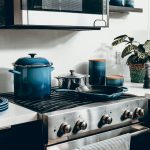Espresso machines can transform home coffee routines into café-quality experiences. Selecting the right one elevates your cozy coffee bar. With diverse options available, how do you make the best choice? This guide unveils essential factors to consider, ensuring your investment delivers rich flavors and barista-like precision. Explore tips and expert insights that will help you create that perfect brew, tailored to your taste and lifestyle. It's time to unlock your inner barista!
Understanding Espresso Machines
Espresso machines are an essential tool for coffee enthusiasts, offering a range of options to suit different preferences and skill levels. The types of espresso machines include manual, semi-automatic, automatic, and super-automatic models, each providing unique features and benefits.
Manual espresso machines require the user to control every aspect of the brewing process, offering a hands-on experience ideal for those who enjoy mastering the art of coffee making. Semi-automatic machines automate some steps, such as water pressure, while allowing users to manage other elements like grind size and tamping. Automatic machines further simplify the process by controlling the water volume, making them user-friendly. Super-automatic machines take convenience to the next level by handling grinding, brewing, and milk frothing with minimal input from the user.
Key components of an espresso machine include the portafilter, which holds the coffee grounds, and the boiler, responsible for heating water to the optimal temperature. The pump creates the necessary pressure to extract espresso, while the steam wand is used for frothing milk. These components work together to produce a rich, flavorful espresso shot.
Each type of machine varies in brewing capabilities and ease of use. Manual machines offer the most control, but require skill and practice. Semi-automatic machines provide a balance between control and convenience, while automatic and super-automatic machines prioritize ease of use, making them suitable for beginners or those with a busy lifestyle. Understanding these differences can help you choose the right espresso machine to fit your coffee brewing needs.
Key Features to Consider
When selecting an espresso machine, understanding the espresso machine features is crucial to achieving optimal brewing performance. The quality of your espresso largely depends on precise pressure and temperature control. Consistent pressure, typically around nine bars, ensures the coffee grounds are evenly extracted, resulting in a rich crema. Similarly, maintaining the right water temperature, usually between 195°F and 205°F, is essential for unlocking the full flavour profile of your coffee.
Size and Capacity
Another important factor is the machine's size and capacity, which should align with your home kitchen space and coffee consumption habits. Larger machines might offer more features but require more counter space, while compact models are ideal for smaller kitchens but may have limited capacity.
User-Friendly Design
A user-friendly design enhances the overall experience, especially for beginners. Look for features like programmable settings, which allow you to customize your brew strength and volume. Machines with built-in grinders provide added convenience by ensuring freshly ground coffee for each brew. These features not only simplify the process but also contribute to a consistent and enjoyable coffee-making experience.
Popular Brands and Model Comparisons
Choosing the right espresso machine can be a daunting task, given the plethora of options available. To simplify your decision, let's delve into some espresso machine reviews and conduct a brand comparison to highlight the top espresso machines on the market.
Overview of Leading Brands
Several brands have established a reputation for quality and innovation in the espresso machine industry. Breville, known for its user-friendly designs and advanced features, offers models like the Barista Express, which is praised for its built-in grinder and precise temperature control. De’Longhi is another popular choice, celebrated for its durable construction and versatile machines, such as the Magnifica, which excels in milk frothing and ease of use. Gaggia is revered for its classic Italian craftsmanship, with models like the Classic Pro being a favourite among espresso purists for its manual control and robust build.
Top-Rated Models: Pros and Cons
When comparing top-rated models, it's essential to weigh their pros and cons. The Breville Barista Express stands out for its integrated grinder and customizable settings, making it ideal for those who value control over their brew. However, its complexity might be overwhelming for beginners. The De’Longhi Magnifica offers a more straightforward operation with its automatic features, though it may lack the same level of customization. Gaggia's Classic Pro, while providing excellent espresso quality, requires more skill and maintenance, which could be a drawback for some users.
User Reviews and Ratings
User reviews and ratings are invaluable in guiding purchase decisions. Many users commend Breville for its reliability and consistent performance, making it a popular choice for both novices and experienced baristas. De’Longhi often receives praise for its affordability and ease of use, appealing to those new to espresso making. Gaggia, while sometimes critiqued for its learning curve, is lauded for delivering authentic espresso shots that satisfy even the most discerning coffee enthusiasts.
Brewing Techniques for Perfect Espresso
Mastering espresso brewing techniques is essential for achieving that perfect shot of espresso at home. Whether you're a budding barista or a seasoned coffee enthusiast, understanding the nuances of coffee extraction can significantly enhance your brewing experience.
Step-by-Step Guide to Brewing Espresso at Home
To begin your espresso journey, start by selecting fresh, high-quality coffee beans. Grind them finely to ensure even extraction. Preheat your espresso machine and portafilter to maintain consistent temperature throughout the brewing process. Tamp the coffee grounds evenly to create a uniform surface, which is crucial for optimal water flow. Once ready, initiate the brewing process, aiming for an extraction time of around 25-30 seconds. This timing is key to balancing the flavors and achieving the desired crema.
Techniques for Achieving Optimal Crema and Flavor Extraction
The secret to a rich crema lies in precise pressure and temperature control. Ensure your machine is set to approximately nine bars of pressure, and maintain a water temperature between 195°F and 205°F. This creates the ideal environment for extracting the coffee's oils and flavors, resulting in a smooth, aromatic espresso shot. Additionally, experimenting with different grind sizes and tamping pressures can help fine-tune your espresso's taste profile.
Tips for Troubleshooting Common Brewing Issues
Even seasoned baristas encounter challenges in their espresso brewing. If your espresso tastes bitter, it may be over-extracted; try adjusting the grind to a coarser setting or reducing the brewing time. Conversely, if it's sour, consider a finer grind or longer extraction. Uneven crema or channeling can indicate uneven tamping or grind distribution, so ensure consistency in these areas. By addressing these common issues, you can refine your barista skills and consistently produce high-quality espresso.
Maintenance and Care for Your Espresso Machine
Proper espresso machine maintenance is crucial for ensuring longevity and optimal performance. By incorporating regular cleaning routines and being attentive to your machine's needs, you can enjoy consistently great espresso.
Essential Maintenance Practices
To prolong your machine's life, it's important to follow a few key practices. Regularly descaling your espresso machine helps prevent mineral build-up, which can affect water flow and temperature. Additionally, keep the machine's exterior clean and free of coffee residue to maintain its appearance and functionality.
Cleaning Routines for Different Components
Each component of your espresso machine requires specific cleaning attention. The portafilter should be rinsed after each use to remove coffee oils and grounds. The steam wand needs to be purged and wiped down to prevent milk residue build-up. For the boiler and pump, periodic deep cleaning is necessary to ensure they function efficiently.
Signs That Indicate Professional Servicing is Needed
While routine maintenance can resolve many issues, there are signs that indicate when professional servicing is necessary. If you notice a significant drop in pressure or inconsistent water temperature, it may be time to consult a technician. Strange noises or leaks also warrant professional attention to prevent further damage. By staying vigilant and addressing these issues promptly, you can extend the life of your espresso machine.
Accessories to Enhance Your Coffee Experience
Enhancing your coffee experience goes beyond just the machine itself. Coffee accessories and espresso tools play a crucial role in achieving the perfect brew and creating a delightful coffee-making environment.
Recommended Accessories for Brewing
To start, a high-quality grinder is indispensable. Freshly ground coffee beans are essential for a superior espresso, and a burr grinder ensures a consistent grind size, which is vital for optimal extraction. A tamper is another barista essential, ensuring the coffee grounds are evenly compressed in the portafilter, leading to a balanced and flavourful shot. Precision scales are also beneficial, allowing you to measure the exact amount of coffee and water for consistency.
Importance of Water Quality and Filtration
Water quality significantly impacts the taste of your espresso. Investing in a good filtration system can enhance flavour by removing impurities and ensuring the water temperature remains stable. This not only improves taste but also prolongs the lifespan of your machine by preventing mineral build-up.
Decorative and Functional Items
Creating a cozy coffee bar atmosphere can enhance your overall experience. Consider decorative items like mugs, saucers, and a stylish coffee canister to store your beans. Functional accessories, such as a milk frothing pitcher and a knock box for used grounds, add convenience and a touch of professionalism to your home setup. These espresso tools not only make brewing more enjoyable but also help maintain a tidy and organised space.
Creating a Cozy Coffee Bar Ambiance
Transforming your coffee bar setup into a cozy atmosphere can elevate your home coffee experience. Start by selecting a dedicated space in your kitchen or living area. Ensure it's easily accessible and has ample room for your espresso machine and accessories. A well-organized space not only enhances functionality but also adds to the inviting feel.
Designing Your Coffee Bar Space
When designing your coffee bar, consider incorporating elements that reflect your personal style. Use shelves or a small cart to organize your espresso tools, mugs, and coffee beans. This keeps everything within reach and adds a touch of charm. Adding a comfortable chair or stool nearby can also create a welcoming spot to enjoy your brew.
Enhancing Ambiance with Lighting and Decor
Lighting plays a crucial role in setting the mood. Opt for warm, soft lighting to create a relaxing environment. String lights or a small lamp can add a cozy touch. Decorate with coffee-themed artwork or plants to bring life and personality to the space. These elements work together to make your coffee bar a delightful retreat.
Pairing Coffee with Snacks
For a complete home coffee experience, consider pairing your espresso with snacks or pastries. A small plate of biscuits, croissants, or chocolates can complement the rich flavors of your coffee. This not only elevates your coffee ritual but also makes your coffee bar a perfect spot for hosting friends or enjoying a quiet moment alone.











